
Wen Haoding, Vice President, Clutch Systems and Transmission Technology, Automotive Division, Schaeffler Investment (China) Co., Ltd.
The Dual Clutch Transmission (DCT) is widely recognized for its high performance and fuel efficiency. Among the different types of DCTs, dry dual clutch systems stand out due to their low drag torque and minimal energy loss from electro-hydraulic control mechanisms. This makes them highly efficient and a leading choice in the field of automatic transmissions.
Progress in Transmission Energy Saving and Emission Reduction
Over the past decade, significant progress has been made in transmission technologies aimed at reducing energy consumption and emissions. Key developments include:
(1) Manual Transmission (MT): Lower viscosity oils reduce drag, while improved dual mass flywheel (DMF) technology enhances stability at low engine speeds. Bearings have also been upgraded to ball bearings for better performance.
(2) Hydraulic Automatic Transmission (AT): More gears and wider speed ratios improve efficiency. Enhanced damper technology helps minimize torque converter slip, especially at lower lock-up speeds.
(3) Continuously Variable Transmission (CVT): CVTs with torque capacities up to 400 N·m now use Schaeffler LuK’s advanced chain technology for better performance.
(4) Dual Clutch Transmission (DCT): Software-based clutch control and gear shifting reduce fuel consumption by about 5%. New electromechanical actuators enhance system efficiency without requiring additional components like an electronic pump or battery.
Compared to traditional hydraulic torque converter ATs, these technologies can achieve up to a 15% reduction in energy use and emissions.
Why DCT Is the Top Choice for Energy Efficiency
One of the main goals of modern automatic transmissions is to significantly cut down vehicle fuel consumption. DCT technology not only meets this goal but also attracts new customers who prefer more efficient and responsive driving experiences.
Volkswagen pioneered DCT with the introduction of the six-speed Direct-Shift Gearbox (DSG) in 2003. This oil-cooled wet DCT opened new possibilities for fuel efficiency and market expansion. Later, the seven-speed DSG (7-DSG) further refined this concept, targeting engines below 250 N·m. A key component was Schaeffler's dry dual clutch, launched in 2008, which offered higher efficiency and reduced fuel consumption.
Dry DCTs are 6% more efficient than wet DCTs, as they rely on air cooling instead of oil, reducing energy losses. However, this requires careful design to ensure thermal stability and durability under high-performance conditions.
Key Requirements for DCT Systems
Dry dual clutches must meet strict requirements: high functionality, stability, comfort, and safety. They need to handle high power output while operating in limited space. Key factors include:
1) Automatic disengagement of the clutch during transmission control failure
2) High thermal stability with low weight and compact size
3) Excellent wear resistance and stable clutch characteristics
4) Compensation for misalignment between the engine and transmission
5) Isolation of engine torque fluctuations
6) Efficient actuators for clutch and gear operation
Based on experience with manual and automated manual transmissions, Schaeffler has developed dry dual clutches that meet evolving demands. Figure 2 shows the dry dual clutch, dual mass flywheel, and actuator used in the Volkswagen 7-DSG.
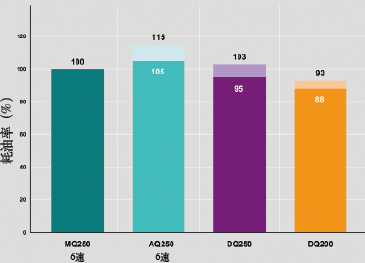
Figure 1: Fuel consumption comparison between 7-DSG (DQ200), manual (MQ250), and torque converter (AQ250) transmissions
Torsional Vibration Isolation
As engine torque fluctuation increases and driving comfort becomes more important, modern internal combustion engines require better vibration isolation from both dampers and clutch systems. In DCTs, two main factors increase the demand for effective damping: increased transmission efficiency reduces damping, and non-loaded gear sets may still be affected by vibrations from engaged gears.
In manual transmissions, curved spring dampers have proven effective. For dual clutches, using a driven disc with a damper in both discs is also suitable. For non-turbocharged gasoline engines, combining the damper with targeted clutch slip control offers a good solution.
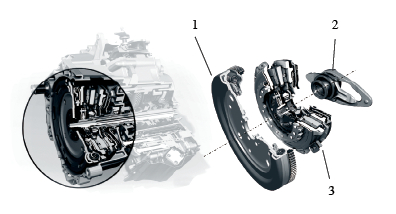
Figure 2: Dry double clutch in Volkswagen 7-DSG
1. Curved spring damper 2. Engagement system 3. Double clutch
Efficient Actuators for DCT Systems
Lever Actuators
The actuators for dry clutches must be highly efficient, accurate, and durable. Volkswagen developed a compact hydraulic system for the 7-DSG, powered by a motor and controlled via valves. Alternatively, Schaeffler developed electromechanical lever actuators, shown in Figure 3.
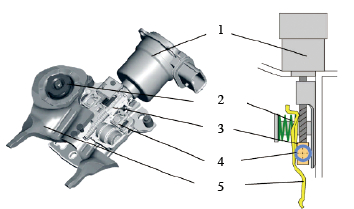
Figure 3: Lever actuator for clutch operation
1. Motor 2. Spring 3. Screw 4. Ball 5. Lever
The electromechanical actuator uses an elastic energy storage system to engage the clutch. The lever ratio is adjusted based on the position of the ball screw, which is driven by a motor fixed to the transmission housing. This allows the motor to operate at a constant, low power level, reducing its size.
Traditional components that convert motor rotation into linear motion do not meet the high power density and efficiency required for dual clutch actuators. To solve this, Schaeffler developed a four-row ball screw with internal raceways, ensuring minimal installation space and smooth movement under high loads.
As a result, the lever actuator is almost fully integrated into the clutch housing, eliminating the need for extra space.
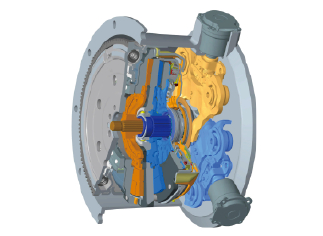
Figure 4: Dry double clutch system with electromechanical lever actuator
2. Motor Drive Transmission Actuator
Schaeffler’s Active Interlock actuator (Figure 5) is part of an electric transmission system. It features a self-locking and disengaging shifting finger unit that works with the internal shifting system of the transmission. By pre-selecting and shifting gears, it ensures that other gears are disengaged before the next one is engaged. This eliminates the need for additional sensors and emergency strategies.
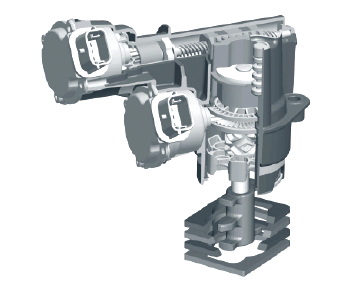
Figure 5: Electric actuator with active interlock mechanism
Wet Dual Clutch Transmission
Wet DCTs are ideal for high-torque vehicles, heavy-duty models, or those with limited radial space. An optimized low-pressure cooling cycle ensures all requirements for dry DCTs are met. Using an electromechanical actuator to directly control the wet clutch through a joint bearing (Figure 6) reduces hydraulic losses and further lowers fuel consumption.
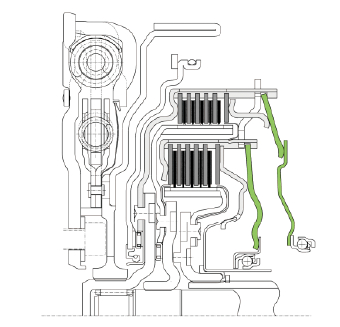
Figure 6: Wet double clutch with spliced bearing
Although wet DCTs can use the same active interlock actuator as dry DCTs, their actuators may vary. They can use a double centering splitter cylinder (CSC) or a hydraulic clutch actuator (HCA) via a hydraulic system. These configurations are just as efficient as lever actuators because there is minimal hydraulic loss. Additionally, maintaining tightness in wet clutches is easier.
Future Development of Transmission Technologies
Over the next 5–10 years, several trends are expected in transmission energy saving and emission reduction:
1) MT will expand its speed ratio range, increasing overspeed conditions and CPA usage.
2) AT will move toward 9 or 10 speeds, offering a broader speed ratio range and better use of low engine speeds with CPA.
3) More LuK high-efficiency chains will be used in the medium torque range of CVTs.
4) On-demand actuators like Schaeffler’s HCA will be applied in new DCTs.
5) ESS (engine start-stop system) adoption will continue to rise.
6) Hybrid powertrains will become more common.
Challenges include increasing gear pairs and speed ratios without affecting weight or cost, managing shift frequency and timing to maintain driver comfort, and improving the comfort of start-stop systems (including NVH and delay issues).
Transmission Development Trends
Looking at current trends, different regions show varying technical preferences: AT is strong in North America, CVT in Japan, and DCT in Europe. China is likely to see growth in multiple transmission types.
From another angle, AT is commonly used in rear-wheel drive (RWD) models, while CVT and DCT are more prevalent in front-wheel drive (FWD) models. Due to varying technical standards and regional preferences, transmission diversity will remain. Transmission efficiency and losses, combined with hybridization, will play a key role in future competition.
Conclusion
DCT applications have demonstrated that both dry and wet dual clutches meet the needs of modern automatic transmissions. More models are expected to enter mass production soon. When paired with efficient actuators like electromechanical systems, DCTs will set the standard for fuel efficiency, performance, and longevity.
Whether using internal combustion engines or electric motors, transmissions with motor actuators are well-suited for hybrid and start-stop systems. This has been confirmed by Schaeffler’s “ESG†prototypes, which use axially parallel-arranged motors. Similar products are expected to launch soon.
With high-efficiency actuators, dry and wet DCTs will continue to lead the way in energy-saving and emission-reduction innovations alongside future torque converter and CVT technologies.
Twin Spot Emergency Light
The Twin spot emergency light is a type of emergency lighting fixture, typically used in buildings for emergency evacuation routes and exits. It features two independent lighting heads, providing a wider illumination range to ensure people can clearly see escape routes in emergency situations. This fixture is usually mounted on walls or ceilings, equipped with backup batteries that automatically activate in case of a power outage, ensuring continuous illumination. The Twin spot emergency light typically has a durable housing and waterproof design, suitable for both indoor and outdoor use.
Twin Spot Emergency Light,Emergency Twin Spot,Twin Spot Led Emergency Light,Emergency Twin Light
JIALINGHANG ELECTRONIC CO.,LTD. , https://www.jlhemergencylighting.com






